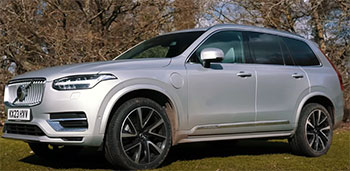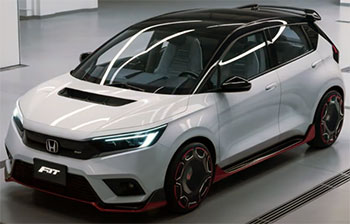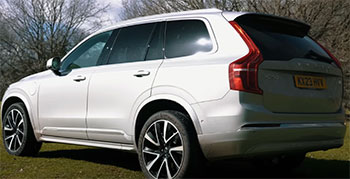As a car enthusiast who’s spent countless hours behind the wheel, I’ve always been drawn to subcompact cars for their affordability, nimble handling, and fuel efficiency. When I set out to compare the Chevrolet Spark and Honda Fit, my goal was to find out which one offers the best bang for your buck.
In this article, I’ll share my firsthand experiences, break down the pros and cons of each vehicle, and help you decide which subcompact suits your lifestyle. Whether you’re navigating city streets or seeking a budget-friendly ride, this comparison will guide you to the right choice.
Comparison Table: Chevrolet Spark vs. Honda Fit
| Feature | Chevrolet Spark | Honda Fit |
|---|---|---|
| Starting MSRP | $13,400 | $16,190 |
| Engine | 1.4L 4-cylinder, 98 hp | 1.5L 4-cylinder, 130 hp |
| Fuel Economy (City/Hwy) | 29/38 MPG | 29/36 MPG |
| Cargo Space | 27.2 cu. ft. (seats folded) | 52.7 cu. ft. (seats folded) |
| Passenger Space | 83.0 cu. ft. | 95.7 cu. ft. |
| Infotainment | 7-inch touchscreen, Apple CarPlay, Android Auto | 5-inch screen (base), 7-inch touchscreen (higher trims) |
| Safety Rating (NHTSA) | 4 stars | 5 stars |
| Airbags | 10 | 6 |
| Warranty | 3 yr/36,000 mi comprehensive, 5 yr/60,000 mi powertrain | 3 yr/36,000 mi comprehensive, 5 yr/60,000 mi powertrain |
| Reliability Rating (iSeeCars) | 7.1/10 | 8.4/10 |
My Experience With the Chevrolet Spark

When I first slid into the driver’s seat of the 2022 Chevrolet Spark, I was struck by how much it felt like a modern car despite its budget price tag.
Starting at just $13,400, the sparkle is one of the most affordable new cars you can buy, and it doesn’t skimp on the essentials.
I tested the 1LT trim with a continuously variable transmission (CVT), which made zipping through city traffic a breeze. The Spark’s compact size—143 inches long—made parking in tight urban spaces feel like cheating at a game.
Its 1.4-liter four-cylinder engine, producing 98 horsepower, isn’t going to win any drag races, but it’s peppy enough for daily commutes.
The interior surprised me with its thoughtful design. The 7-inch touchscreen, standard across most trims, was responsive and intuitive, seamlessly connecting to my phone via Apple CarPlay. I streamed music, checked directions, and even used voice commands without a hitch. The cabin felt modern, with a clean layout and decent materials for the price.
However, the rear seats were cramped, and I wouldn’t want to stick my taller friends back there for long. With only 27.2 cubic feet of cargo space with the seats folded, it’s clear the Spark prioritizes solo drivers or small families.
On the road, the Spark’s handling was nimble, and its fuel economy—29 MPG city and 38 MPG highway—kept my gas bill low. I took it on a 200-mile road trip, and while it handled highways decently, the small engine struggled with steep inclines. Safety features like the rear vision camera and 10 airbags gave me peace of mind, though the 4-star NHTSA rating isn’t top-tier. Overall, the Spark felt like a reliable, no-frills option for budget-conscious drivers who value tech and maneuverability over space.
Pros Of the Chevrolet Spark
- Affordable Price: The Spark’s starting MSRP of $13,400 is nearly $3,000 less than the Honda Fit, making it a fantastic choice if you’re watching your wallet. You can upgrade trims or add accessories without breaking the bank.
- Fuel Efficiency: With 29 MPG city and 38 MPG highway, the Spark edges out the Fit slightly on the highway, which saved me a few bucks on long drives.
- Compact Size: At just 143 inches long, the Spark is a dream for city parking. I squeezed into spots that would’ve made larger cars weep.
- Modern Infotainment: The standard 7-inch touchscreen with Apple CarPlay and Android Auto felt like a luxury in a budget car. Streaming music and navigation were seamless.
- Wi-Fi Capability: The Spark’s 4G LTE Wi-Fi hotspot kept me connected on the go, a feature the base Fit lacks. It’s great for passengers or remote work on road trips.
- Safety Features: With 10 airbags and a rear vision camera, the Spark offers solid safety for its class, though it misses out on advanced options like automatic emergency braking on lower trims.
- Nimble Handling: The Spark’s tight turning radius and light weight made it fun to dart through urban traffic. It felt responsive and easy to control.
The Spark’s affordability is its biggest draw. I could outfit a higher trim with features like a six-speaker audio system and still spend less than the base Fit. Its fuel efficiency shone during my city commutes, where I averaged close to the EPA’s 29 MPG. The compact size was a lifesaver in crowded lots, and I never struggled to find a parking spot.
The infotainment system punched above its weight, with a crisp display and user-friendly interface. While it’s not a powerhouse, the Spark’s handling kept me engaged, and the safety suite, while basic, covered the essentials. For solo drivers or small households, it’s a practical, tech-savvy choice.
Cons Of the Chevrolet Spark
- Limited Cargo Space: The Spark’s 27.2 cubic feet of cargo space with seats folded pales compared to the Fit’s 52.7. I struggled to fit larger items like a bike or bulky groceries.
- Cramped Rear Seats: Rear legroom (33 inches) and shoulder room felt tight. My friends over 6 feet tall were uncomfortable on even short rides.
- Underpowered Engine: The 98-horsepower engine felt sluggish on highways, especially with passengers or cargo. Merging onto fast-moving roads required planning.
- Basic Interior Materials: While functional, the hard plastics and basic cloth seats screamed “budget car.” It lacked the Fit’s more refined feel.
- Lower Reliability Rating: iSeeCars rates the Spark at 7.1/10 for reliability, compared to the Fit’s 8.4/10. I worried about long-term maintenance costs.
- Limited Advanced Safety: Automatic emergency braking and lane departure warnings are only available on the top trim with a CVT, and even then, they’re an extra $295.
- Depreciation: The Spark loses 30.6% of its value over five years, worse than the Fit’s 19.9%. Resale value isn’t its strong suit.
The Spark’s small cargo area was a constant frustration. I could barely fit a week’s worth of groceries with the seats folded, and larger items were out of the question. The rear seats were fine for kids but felt claustrophobic for adults. The engine’s lack of power made highway driving a bit nerve-wracking, especially when loaded up.
While the interior was functional, it didn’t feel as polished as the Fit’s, and the reliability concerns lingered in my mind. The lack of standard advanced safety features was a letdown, and the higher depreciation rate made me question its long-term value.
My Experience With the Honda Fit

The 2020 Honda Fit LX was a different beast altogether. Priced at $16,190, it’s pricier than the Spark, but it felt like a step up in quality.
The 1.5-liter four-cylinder engine, pumping out 130 horsepower, gave it more zip than the Spark, making highway merges smoother and city driving more confident.
I tested it on a mix of urban streets and open roads, and the Fit’s handling felt precise, though not as agile as the Spark in tight spaces due to its slightly larger size.
The Fit’s interior was a highlight. With 95.7 cubic feet of passenger space, it felt airy and accommodating, even for taller passengers.
The “Magic Seat” system, which allows the rear seats to fold flat or flip up, gave me 52.7 cubic feet of cargo space—enough for a small road trip’s worth of gear.
The base model’s 5-inch screen was a disappointment, lacking the touchscreen flair of the Spark, but higher trims upgrade to a 7-inch display with Apple CarPlay and Android Auto. Fuel economy was solid at 29 MPG city and 36 MPG highway, though it trailed the Spark slightly on the highway.
Safety was a strong point, with a 5-star NHTSA rating and six airbags. Features like Eco Assist helped me maximize fuel efficiency, and the CVT was smooth, though I missed the Spark’s Wi-Fi perk. The Fit felt like a car built to last, with Honda’s reputation for reliability (8.4/10 from iSeeCars) giving me confidence. It’s a versatile hatchback that balances practicality and performance, ideal for small families or anyone needing extra cargo space.
Pros Of the Honda Fit
- Spacious Interior: The Fit’s 95.7 cubic feet of passenger space made it feel roomy. I could seat four adults comfortably, with 37.6 inches of rear legroom.
- Versatile Cargo Space: The Magic Seat system offers 52.7 cubic feet of cargo space with seats folded, perfect for hauling bikes, furniture, or camping gear.
- Powerful Engine: The 130-horsepower 1.5-liter engine felt lively, making highway driving and quick accelerations a breeze compared to the Spark.
- High Reliability: With an 8.4/10 reliability rating from iSeeCars, the Fit gave me confidence in its long-term durability and lower maintenance costs.
- Strong Safety Rating: The 5-star NHTSA rating and features like Eco Assist and a multi-angle rearview camera made me feel secure.
- Better Resale Value: The Fit retains 80.1% of its value after five years, far better than the Spark’s 69.4%, making it a smarter long-term investment.
- Flexible Seating: The Magic Seat’s ability to flip up or fold flat offered unmatched versatility for odd-shaped cargo or extra storage.
The Fit’s interior space was a game-changer. I could fit my tall friends in the back without complaints, and the cargo area swallowed everything from groceries to a folded-up tent. The engine’s extra power made it more fun to drive, especially on open roads where the Spark felt strained.
Honda’s reliability reputation eased my worries about future repairs, and the safety ratings were reassuring. The resale value was a big plus—knowing I’d get more back when selling made the higher price tag easier to swallow. The Magic Seat’s flexibility was a standout, letting me configure the interior for almost any need.
Cons Of the Honda Fit
- Higher Price: Starting at $16,190, the Fit costs nearly $3,000 more than the Spark, which could stretch budgets for cost-conscious buyers like me.
- Base Model Infotainment: The 5-inch non-touchscreen display on the base LX felt outdated. I had to upgrade to get Apple CarPlay and Android Auto.
- Slightly Lower Highway MPG: At 36 MPG highway, the Fit trails the Spark’s 38 MPG, which added up on longer trips.
- Less Agile in Tight Spaces: While still compact, the Fit’s larger size (161 inches) made it less nimble than the Spark in crowded parking lots.
- Fewer Airbags: With six airbags compared to the Spark’s 10, the Fit’s safety suite felt slightly less comprehensive.
- No Wi-Fi Option: Unlike the Spark, the Fit lacks a built-in Wi-Fi hotspot, which was a bummer for staying connected on the go.
- Basic Base Trim: The base LX lacks features like cruise control or a leather-wrapped steering wheel, which even mid-tier Sparks include.
The Fit’s higher price was a sticking point—I kept wondering if the extra features justified the cost. The base model’s tiny screen felt like a step back, forcing me to consider pricier trims for modern tech. The slightly lower highway fuel economy wasn’t a dealbreaker, but I noticed the difference on road trips. Parking the Fit in tight urban spots wasn’t as effortless as with the Spark, and the lack of Wi-Fi was a letdown for my tech-heavy lifestyle. While the Fit felt premium, the base trim’s sparse features made me question its value.
Comparing the Spark and Fit Head-to-Head

When I put the Chevrolet Spark and Honda Fit side by side, the differences became clearer.
The Spark’s biggest strength is its price—starting at $13,400, it’s a steal for a new car.
I saved thousands upfront, which let me splurge on a higher trim with features like a six-speaker audio system and cruise control.
The Spark’s compact size and nimble handling made it a joy in city environments, and its 7-inch touchscreen with Apple CarPlay and Android Auto felt like a premium touch. The 4G LTE Wi-Fi hotspot was a unique perk, perfect for streaming or working on the go.
However, the Spark’s 98-horsepower engine felt underpowered on highways, and its 27.2 cubic feet of cargo space was limiting. The 4-star NHTSA safety rating and 7.1/10 reliability score from iSeeCars were respectable but not class-leading.
The Honda Fit, starting at $16,190, justified its higher price with a more spacious interior and versatile cargo options. The Magic Seat system was a revelation—I could fit a bike or bulky furniture with ease, thanks to the 52.7 cubic feet of cargo space. The 130-horsepower engine made driving more engaging, and the 5-star NHTSA safety rating gave me confidence. The Fit’s 8.4/10 reliability score and better resale value (80.1% after five years) made it a smarter long-term buy. But the base model’s 5-inch screen and lack of Wi-Fi were letdowns, and its slightly larger size made it less ideal for tight parking.
Both cars excel in fuel efficiency, with the Spark edging out slightly on highways (38 MPG vs. 36 MPG). The Spark’s 10 airbags outnumber the Fit’s six, but the Fit’s higher safety rating balances things out. For tech, the Spark wins at the base level, but the Fit’s higher trims catch up. Reliability and resale value lean heavily toward the Fit, while the Spark dominates in affordability and urban maneuverability. My test drives showed the Spark as the better city companion, while the Fit shone for versatility and long-term ownership.
Who Should Buy Which Car?
If you’re a solo driver or a young professional on a tight budget, the Spark is your match. Its low price, compact size, and modern tech make it ideal for urban commutes and small errands. I loved its ease of parking and fuel savings, but it’s not built for heavy cargo or frequent highway trips. If you need space for passengers, gear, or occasional road trips, the Fit is the better pick. Its roomy interior, versatile seats, and strong reliability make it a practical choice for small families or active lifestyles, though you’ll pay more upfront.
Frequently Asked Questions (FAQ)
Yes, the Honda Fit is larger, with 95.7 cubic feet of passenger space and 52.7 cubic feet of cargo space compared to the Spark’s 83.0 and 27.2 cubic feet.
Chevrolet discontinued the Spark in 2022 to focus on larger vehicles like SUVs and electric models, as subcompact car demand declined.
The Fit’s base model has an outdated 5-inch non-touchscreen, fewer airbags than the Spark, and a higher starting price that may deter budget buyers.
Honda generally edges out Chevrolet in reliability and resale value, but the Spark offers better affordability and base-level tech. It depends on your priorities.
Conclusion: For Chevrolet Spark and Honda Fit
You’ve got two solid subcompact options, but your choice depends on what you value most. If you’re pinching pennies and need a city-friendly car with modern tech, the Chevrolet Spark is a fantastic deal. Its low price, nimble handling, and Wi-Fi hotspot made my urban drives a breeze, though it’s tight on space and power. If you prioritize versatility, reliability, and space, the Honda Fit is worth the extra cost. Its Magic Seat, roomy interior, and strong resale value won me over for longer trips. Test-drive both to see which fits your life—you can’t go wrong either way.

